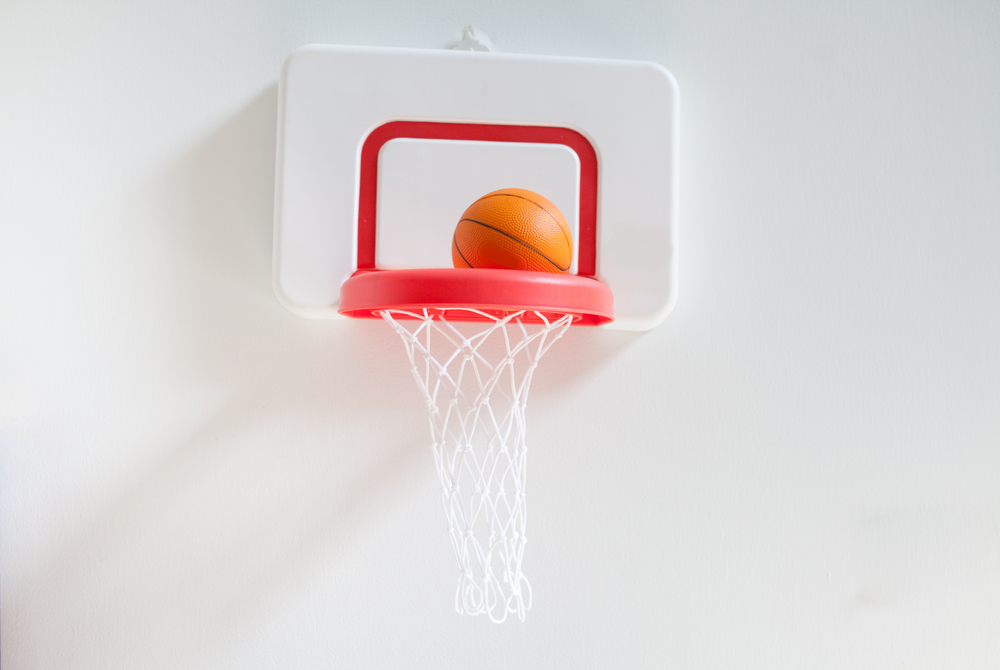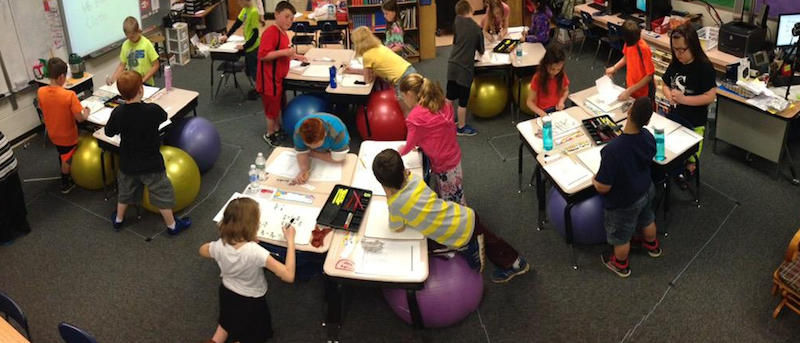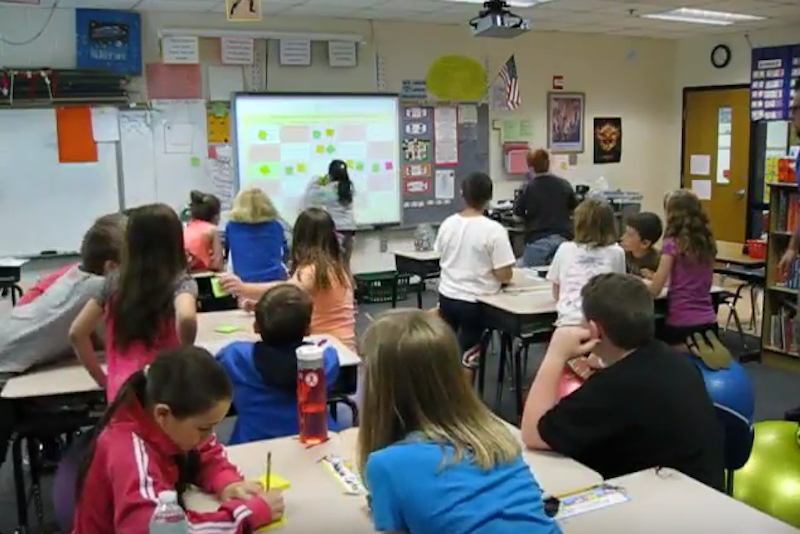
#4: Ask a question, and correct answers earn students a chance to take a shot. (MIA Studios/Shutterstock)
May is Physical Fitness and Sports Month. Students have an allotted time for Physical Education classes, but 45 minutes once or twice a week isn’t going to cut it, especially with the CDC recommendation that children and adolescents get a minimum of 60 minutes of physical activity every single day.
With summer rapidly approaching, no student (or teacher) wants to stay stationary as we review for the end-of-year. Take the initiative to embrace Physical Fitness and Sports Month by incorporating these four highly engaging, movement-based review games to get your students’ minds and bodies working.
Scoot
In this game, I develop a series of review questions about a topic and type them into this Scoot Template (make a copy). Next, I cut the questions apart and place one question on each student’s desk. I also lay down paths made from yarn for the students to follow as they travel from desk to desk. At each desk, they are given a few minutes to respond to the question. They mark their responses on the student answer document in the Scoot Template for us to review later as a class. At the end of the time, I call out, “SCOOT!” and they move to the next desk.

At the end of the time, I call out, “SCOOT!” and students move to the next review question. (Photo c/o Justin Birckbichler)
I’ve found that my students really enjoy this activity, but definitely need some help in figuring out the rotation initially, even with the yarn down as a guideline. I recommend physically walking the path beforehand so the students can see how to rotate from desk to desk.
BoardRush
Imagine a giant tic-tac-toe board on your interactive whiteboard. In teams, students work together to respond to prompts in each square, using this Board Rush Template. On blue squares, I write straight-forward questions for students to answer (“What is the period following the Civil War known as?”) Orange square contain fill-in-the-blank questions (“Arthur Ashe was an African-American ______________.”) In pink and green squares, the students have to write questions that would result in the word, similar to how Jeopardy players respond. (“Coastal Plain” – an example ‘answer’ would be “Which Virginia region is characterized by flat land?”)

Students write their answers on Stickies and rush up to the board to stick them on. (Photo c/o Justin Birckbichler)
They write their answers on Stickies and rush up to the board to stick them on. I check them on the spot and tear down the incorrect answers. To amp up the level of difficulty, you can drag the red circles to “close” the square after two correct answers. This makes the students strategize better. The goal is to get five in a row, which will ensure students can’t just answer the “easy” questions. To see it for yourself, you can watch my students playing it here! (In the video, I was using SmartNotebook to “close” the squares instead of the red circles in the template.)
Scavenger Hunt
Using the same template provided for Scoot, you can also lead your students on a scavenger hunt. Instead of placing the questions on desks, tape/staple them up in different locations around your room or even around the whole school. Be sure to place them at a variety of heights to ensure students are reaching high and low to answer their questions. The students will have to search for and answer all the questions you’ve hidden for them. Afterwards, come together as a class to review the questions and answers.
Basketball
The final review game activity requires very minimal setup, but you will need a special piece of equipment – a basketball hoop. You don’t need to shell out the big bucks for this; you can pick one up from your local dollar store or get this add-on item from Amazon. Simply set the hoop up and mark off a rudimentary court, with lines for two and three point shots. Ask a question, and correct answers earn students a chance to take a shot.

Ask a question, and correct answers earn students a chance to take a shot. (Photo c/o Justin Birckbichler)
Want to increase the difficulty? Offer the students a choice to sacrifice their chance to take a shot to become a “swatter” – someone who can try to block another player’s shot. Watch as your students begin to contemplate the cost-benefit analysis of trying to prevent another player from earning a point and be amazed by how complex shot-taking will become!
The Bottom Line
Whichever activity you choose, make sure you are giving students an adequate time to move their bodies throughout the day, even if it’s just throwing in a random dance party here and there. While we know that time is precious and we don’t want to waste a moment of instructional time, it’s also important to infuse learning with physical movement. The investment in activity will surely pay off in heightened engagement and an increase in achievement.